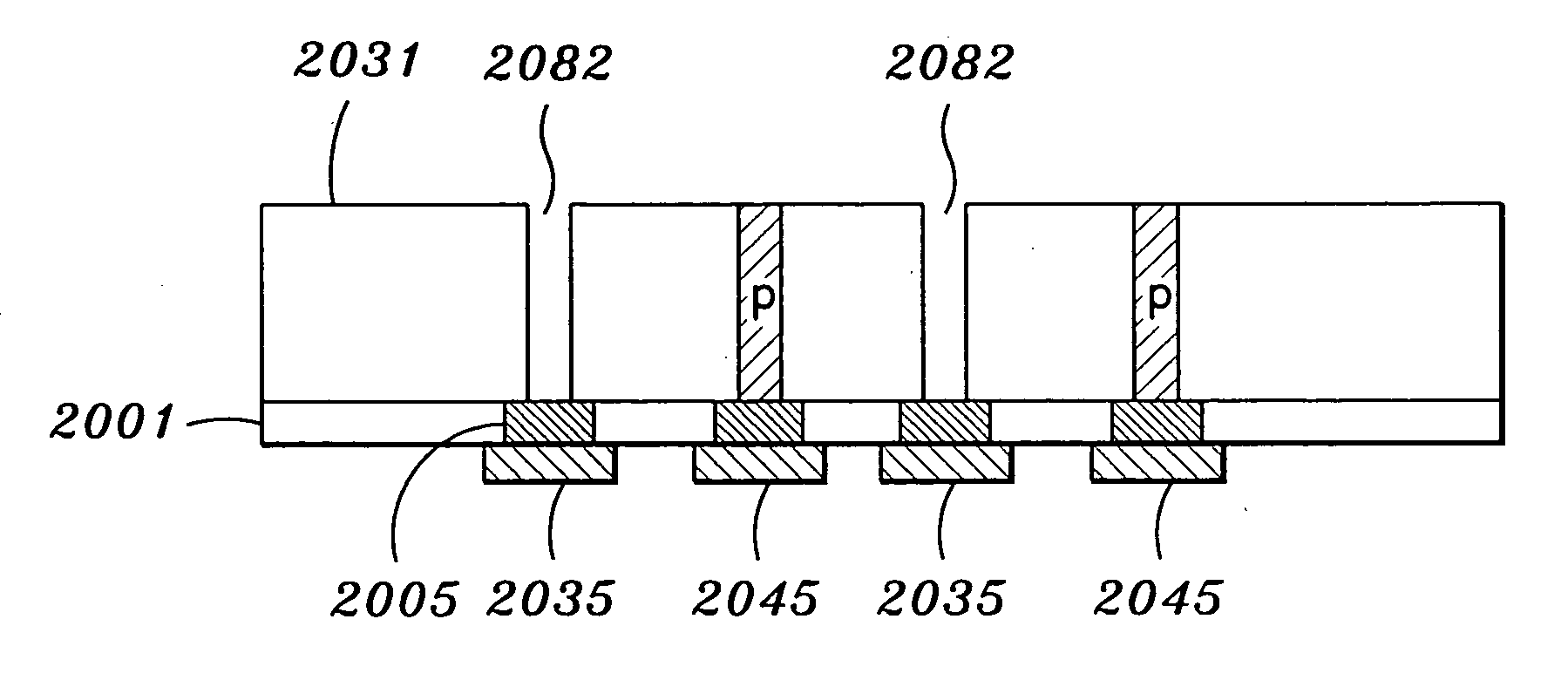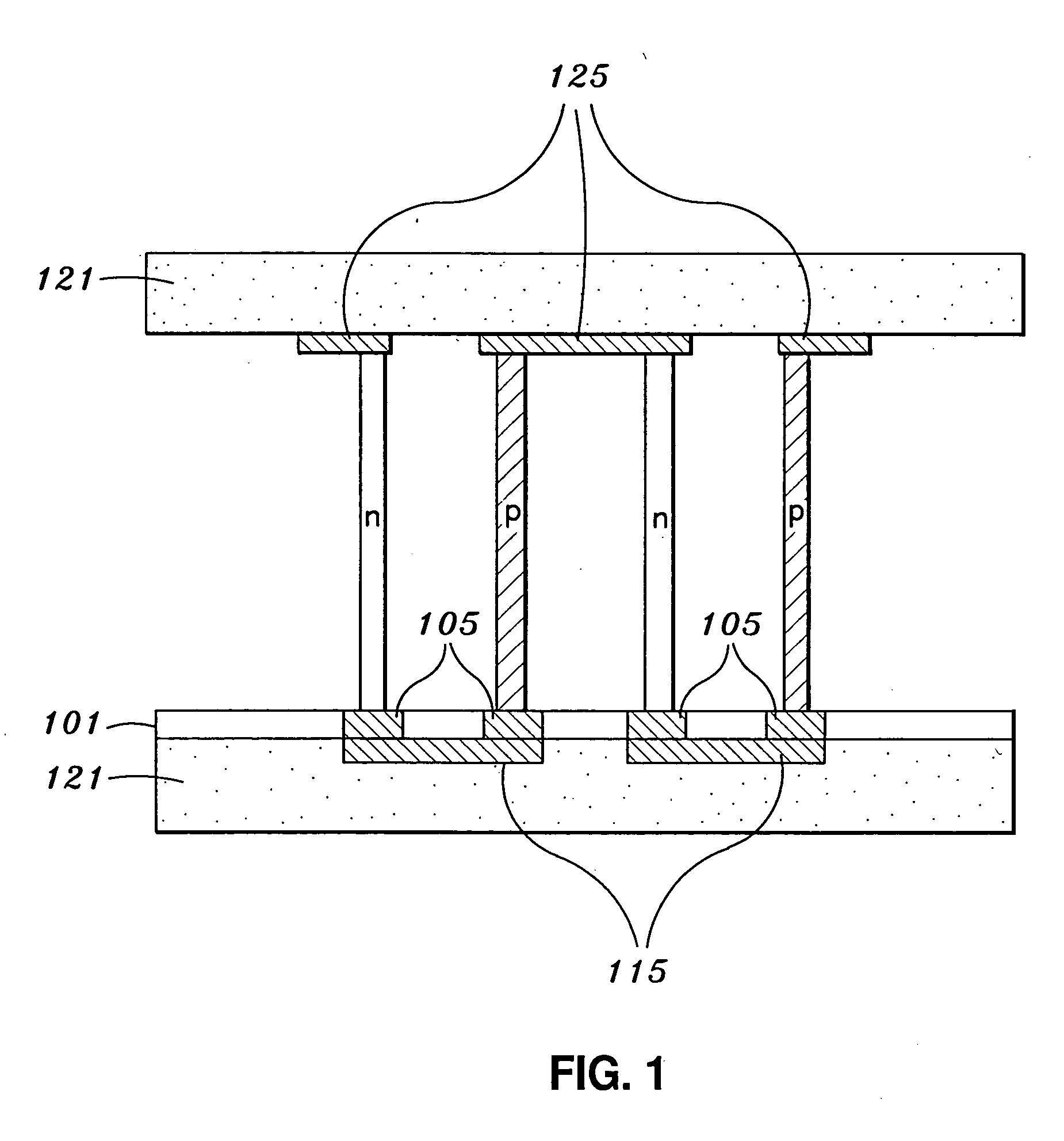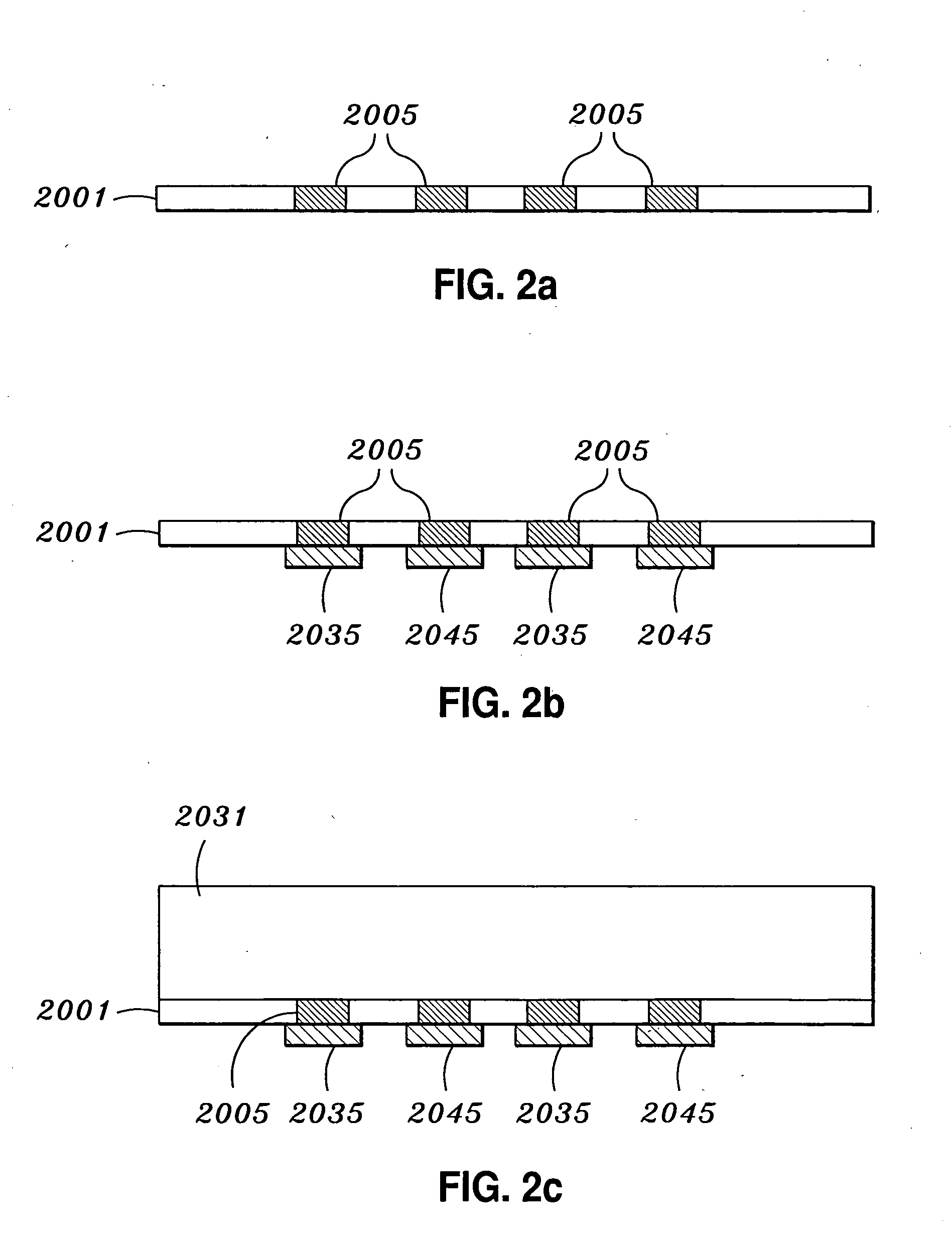Fabrication of nanoscale thermoelectric devices
a thermoelectric device and nano-scale technology, applied in the direction of thermoelectric device manufacturing/treatment, printed circuit manufacturing, conductive pattern formation, etc., can solve problems such as damage to nanowires
- Summary
- Abstract
- Description
- Claims
- Application Information
AI Technical Summary
Benefits of technology
Problems solved by technology
Method used
Image
Examples
Embodiment Construction
The present invention provides a method for fabricating a nanoscale thermoelectric module, wherein the thermoelements are nanowire structures. The TEM produced is expected to have more efficient thermoelectric qualities due to the nanowire thermoelements. Furthermore, the fabrication method that is provided is likely to yield numerous advantages, such as a decreased likelihood of damage to the nanowires during device fabrication, adaptability to automation and lower manufacturing costs.
FIGS. 2a through 2g show various stages of one embodiment of the method of the present invention from a cross-sectional view. FIGS. 4a to 4c show a bottom view of select stages of TEM fabrication.
One feature of the present invention is the use of a substrate with through-electrodes upon which the p-type and n-type nanowires are to be grown, an example of which is shown in FIG. 2a. FIG. 4a shows the bottom view of the substrate shown in FIG. 2a. The substrate (2001) has substrate electrodes (2005) ...
PUM
| Property | Measurement | Unit |
|---|---|---|
| diameter | aaaaa | aaaaa |
| diameter | aaaaa | aaaaa |
| diameter | aaaaa | aaaaa |
Abstract
Description
Claims
Application Information
 Login to View More
Login to View More - R&D
- Intellectual Property
- Life Sciences
- Materials
- Tech Scout
- Unparalleled Data Quality
- Higher Quality Content
- 60% Fewer Hallucinations
Browse by: Latest US Patents, China's latest patents, Technical Efficacy Thesaurus, Application Domain, Technology Topic, Popular Technical Reports.
© 2025 PatSnap. All rights reserved.Legal|Privacy policy|Modern Slavery Act Transparency Statement|Sitemap|About US| Contact US: help@patsnap.com



